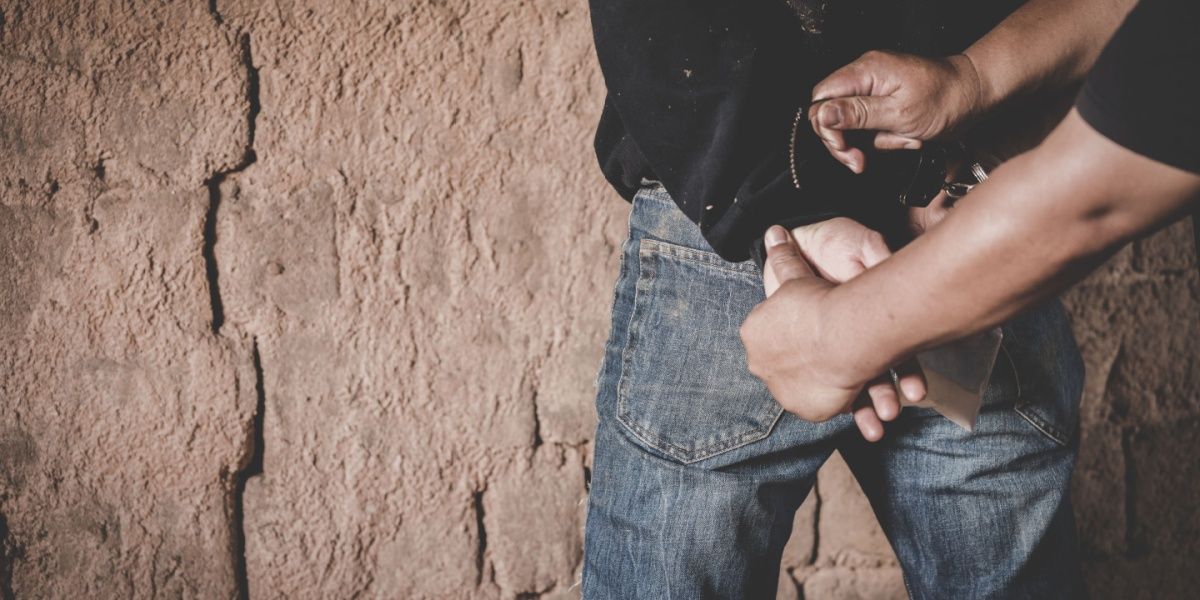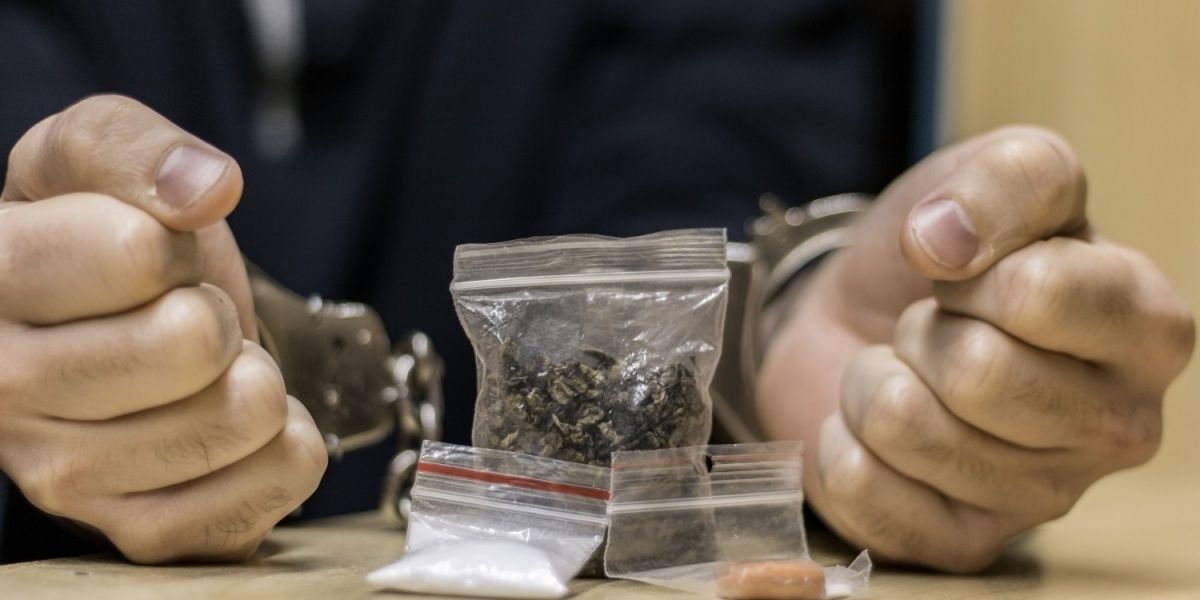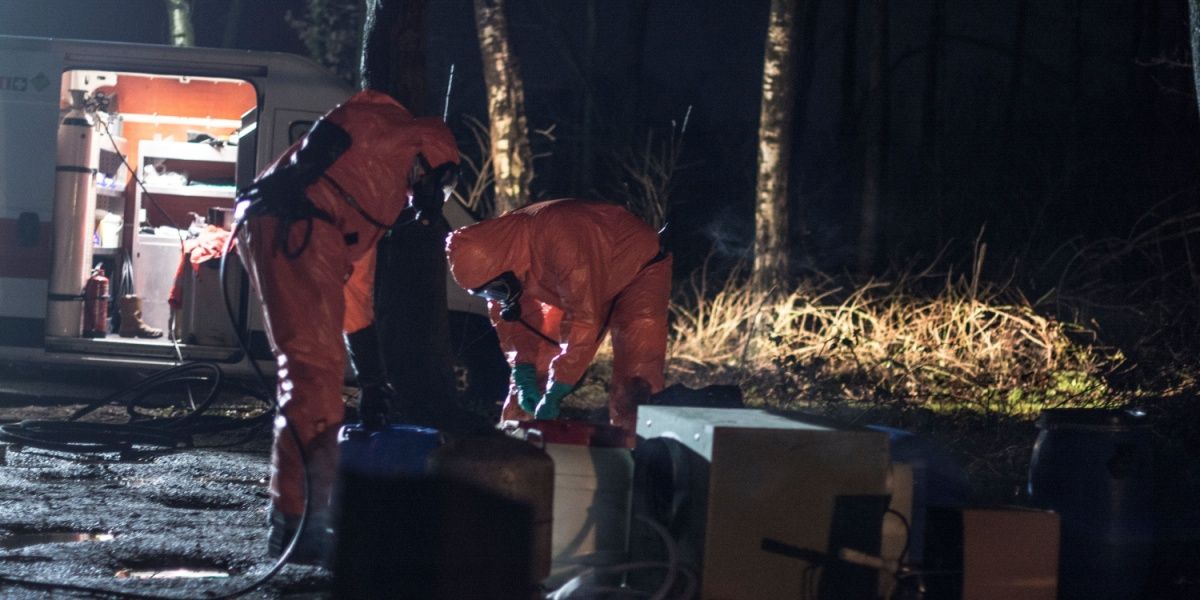Possession and distribution of most drugs (except alcohol and marijuana) is a criminal offense and is responsible for the majority of the arrests made in the US each year. In addition to drug-related charges that strain our legal and justice system, drugs and alcohol play an indirect role in many other crimes. It’s estimated that between 25-50% of violent crimes are committed by someone under the influence of drugs or alcohol, as were nearly 60% of robbery, theft, and property crimes that led to incarceration.
- In the US, 35% of victims of violent crimes believe their attackers were under the influence of alcohol at the time of the assault
- 41% of violent crimes committed against college students and 38% of non-college student victims believed their offender was under the influence of drugs at the time of the assault
- In 2016, 28% of all traffic-related deaths in the US involved a drunk driver
.jpg?v=1722501953)
Alcohol-related crime & violence
There is a proven correlation between inmates convicted of violent crimes and alcohol use during or prior to the act. Excessive drinking can lower inhibitions, impair a person’s judgment, and increase the risk of aggressive behaviors. Alcohol is also legal for adults over the age of 21 to buy and consume, making it more accessible than other drugs. As a result, alcohol-related violence and crime are a major problem in our society and one that continues to worsen. [3][4]
According to recent data from the WHO, CDC, and BJS: [1][3][4][5]
- 95,000 people in the US die each year from excessive alcohol use, which is about 261 deaths per day, making it the leading cause of preventable death in America
- Alcohol is responsible for 4% of health problems, disabilities, and death in the world
- In the US, 35% of victims of violent crimes believe their attackers were under the influence of alcohol at the time of the assault
- Heavy drinkers are more likely to commit violent crimes
- Alcohol use increases the likelihood of youth violence, child maltreatment and abuse, intimate partner violence, elder abuse, and sexual assault and sexual violence
- Of those under the influence at the time of committing a violent crime, 1/3 are believed to have been under the influence of alcohol
- In 2019, an estimated 15% of the population struggled with an alcohol use disorder (aka alcoholism or an addiction to alcohol)
- 30% of inmates in state prisons reported they were daily alcohol users and roughly half of these individuals had been in treatment for alcohol use prior to getting incarcerated
- Of those incarcerated for homicide, more than half of the murders occurred when under the influence of alcohol
- An estimated 2/3 of all instances of interpersonal violence (aka intimate partner violence or domestic violence) are believed to be attributed to alcohol, with some countries reporting as many as 70% of IPV being perpetrated by someone under the influence of alcohol
- Alcohol is the most common substance used in cases of ‘date rape’ and is often a factor involved in sexual assault and rape, increasing both the likelihood of committing sexual violence as well as becoming a sexual assault victim
Drug-related crime and violence
Drug-related offenses are a complex social issue that involves many factors including the criminalization of drugs leading to drug policies that disproportionately affect minorities and people of lower socioeconomic status. [2]
The vast majority of all drug-related arrests are for possession, and not for sale or distribution. [1] This suggests that the war on drugs and current drug policies are more likely to punish those struggling with drug addiction, rather than the drug traffickers supplying illegal drugs to these individuals. [2]
Many people who commit misdemeanors or non-violent crimes do so to support an addiction to drugs, with nearly 20% of prison inmates admitting to committing a crime to obtain money for drugs. [1] There are also the crimes that are committed by those who are intoxicated, usually public disorder crimes, property crimes, and crimes like driving while intoxicated or under the influence (aka DUI and DWI offenses).
A relatively small number of drug users commit violent crimes but being under the influence of drugs does make a person more likely to commit assault, sexual assault, and even homicide.
Drug-related crimes can be broken down further into three categories:
- System-related drug crime: These crimes include any production, manufacturing, and distribution of illegal drugs as well as crimes related to large-scale drug production like corruption, bribery, and even murder and kidnapping to protect drug manufacturing or distribution
- Economic-related drug crime: Crimes committed to procure drugs or money for drugs including prostitution, robbery, theft, fraud, or other petty crimes committed for money used to purchase drugs
- Use-related drug crime: Crimes committed while intoxicated or impaired by the effects of a drug that are believed to be a direct or indirect cause of the intoxication including assault, vandalism, public indecency, and driving while intoxicated (DWI)
Drugs and violent crime
While alcohol is more closely correlated with violent crimes like assault, sexual assault, intimate partner violence, and abuse, illegal drugs are also a common factor in violent crimes.
Here are some statistics on drug-related violent crimes, as reported by the Bureau of Justice Statistics: [1]
- 8% of local inmates arrested for violent crimes committed the offense to get money for drugs
- 9.8% of state prisoners arrested for violent crimes committed the offense to get money for drugs
- 18.4% of federal prisoners arrested for violent crimes committed the offense to get money for drugs
- Nearly 4% of homicides in 2007 were drug-related
- 41% of violent crimes committed against college students and 38% of non-college student victims believed their offender was under the influence of drugs at the time of the assault
- 2 out of 5 instances of rape and sexual assault against college students were committed by a person believed to be under the influence of drugs
- 26% of victims of all violent crimes believed their offender had been using drugs or alcohol at the time of the assault
- “Club drugs” and “date rape drugs” like GHB, Ketamine, and Rohypnol (aka ‘roofies’) are commonly used to commit sexual assaults against unknowing victims who have been drugged, known commonly as spiking.
Driving while intoxicated (DWI)
Driving while under the influence of drugs or alcohol continues to be a major public health issue, as well as a leading cause of death in the US. Drugs and alcohol cause impairments in motor functioning, judgment, perception, and vision which all greatly increase a person’s risk of accidents and injuries. [6]
For this reason, it is illegal to drive while intoxicated by alcohol (having a blood alcohol content or BAC above 0.8, or above 0.5 in Utah) or any illicit drugs. Also, many states have cracked down on DUI and DWI penalties, and violations can result in felony charges, revoked driving privileges, jail time, and higher insurance costs. [6] Despite these efforts, many preventable deaths occur each year as a direct result of impaired driving.
Here are some statistics on driving while under the influence of drugs or alcohol: [6][7]
- 28 people in the US die each day because of a drunk driving accident (more than one death every hour)
- In 2016, 28% of all traffic-related deaths in the US involved a drunk driver
- In 2016, 17% of child deaths from fatal car accidents in the US involved a drunk driver
- In 2016, more than 1 million US drivers were arrested for driving under the influence of drugs or alcohol
- Illegal drugs (besides alcohol) account for 16% of all motor vehicle accidents
- Marijuana users are 25% more likely to be involved in a car accident than non-marijuana users
Juvenile crime
Studies have proven that around 80% of young people in various state juvenile justice systems had some correlation between their crime and drugs or alcohol. This includes those who were under the influence when committing their crimes, tested positive for drugs in their system, admitted to having substance use issues or addiction, or whose crimes were directly linked to drugs or alcohol. [8]
Here are some statistics on juvenile drug and alcohol-related crimes: [8][9]
- An estimated 1.9 to 2.4 million minors in the juvenile justice system have substance abuse or addiction problems
- 86% of juvenile offenders have a history of substance use
- Of those with substance use disorders, only 68,000 receive treatment
- 85% of juvenile offenders admitted they had bought drugs and 55% admitted to selling drugs
- One-third of teens arrested for assault claimed they were drunk or high when the incident occurred
- Nearly two-thirds of juvenile offenders confess to using one or more substances daily
- Substance use in minors increases the likelihood that they will commit crimes, including violent crimes like assault, sexual assault, and even homicide
Moving away from crime: treatment and recovery
The use of alcohol or illicit drugs like heroin and cocaine greatly increases the likelihood of criminal involvement, including the risk for violent crime. Drug and alcohol use also predicts ongoing criminal involvement, with studies showing that 68% of released prisoners are rearrested for drug charges within three years of exiting prison. [10]
A lack of suitable addiction treatment options for those in the criminal justice system is believed to be one of the leading causes of drug-related crime. The treatment available to criminals is often of poor quality or not suited to their needs, despite the principles for effective treatment being the same as the general population. Most reports indicate that proper addiction treatment can change individuals' beliefs, behaviors, and attitudes towards substance abuse and help offenders successfully remove themselves from a life of drug use and crime. [10]
Final thoughts
A vast number of violent and non-violent crimes committed each year are either directly or indirectly linked to alcohol or other drugs. Effective addiction treatment, including group and individual counseling and medication, is believed to offer protection against many of the secondary problems related to adding crime. Support for individuals to re-enter society, access resources, treatment, housing, and vocational support after drug-related incarcerations is also essential to solve the root causes of drug-related crime.




